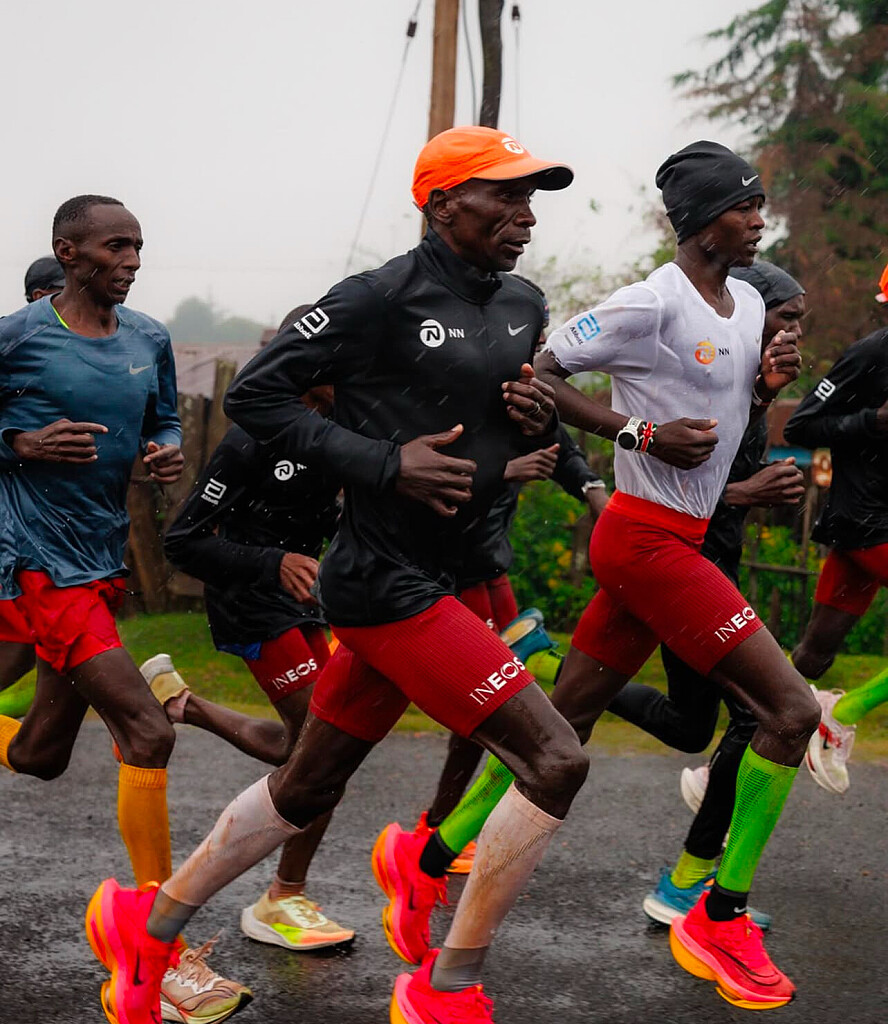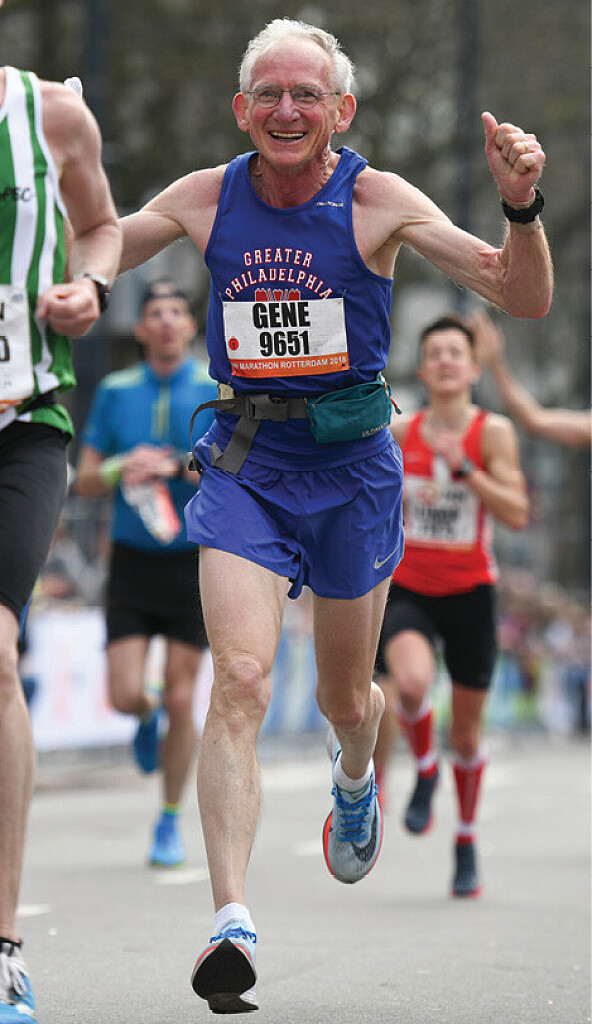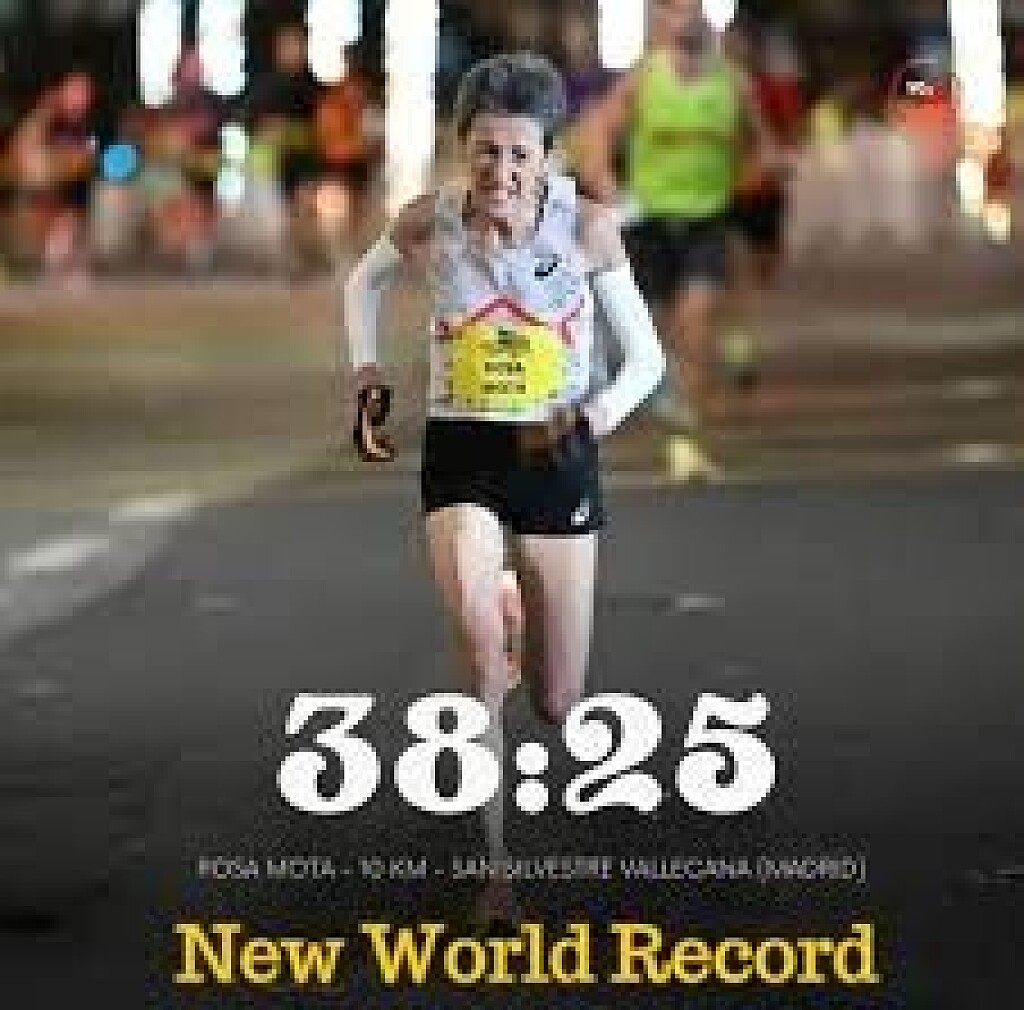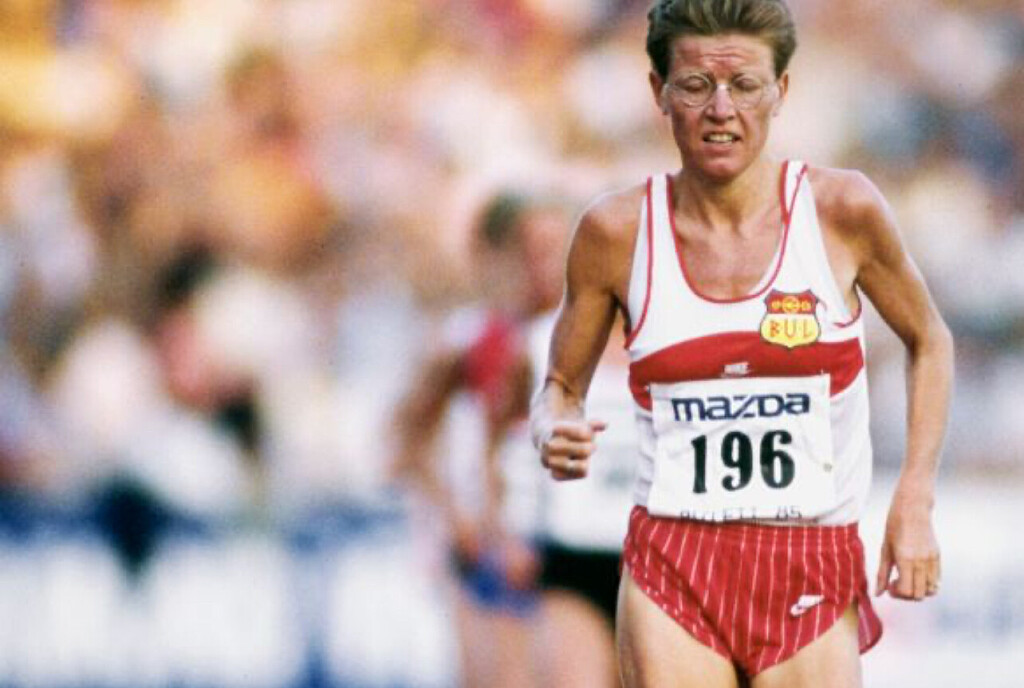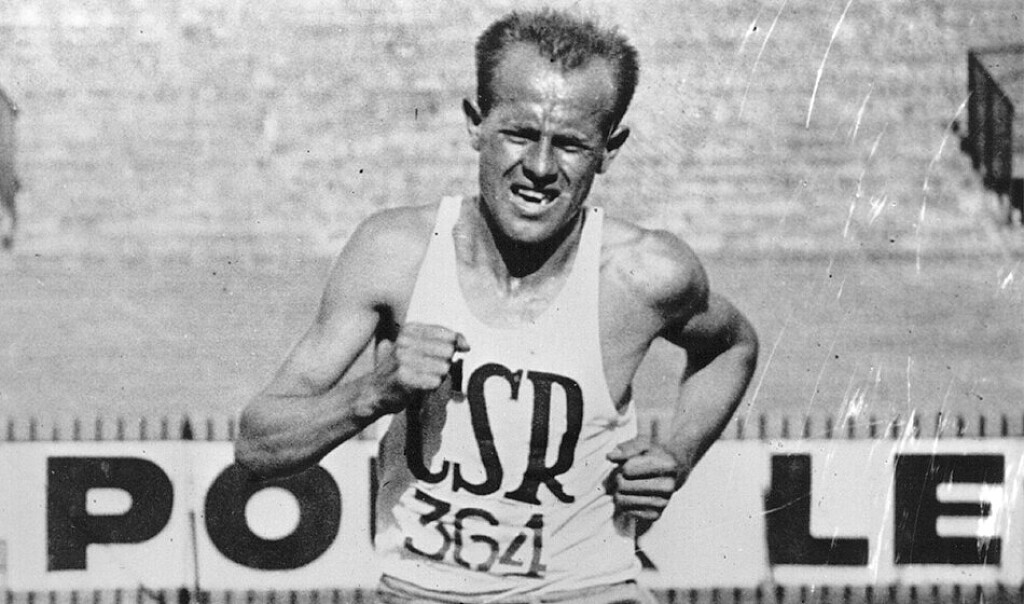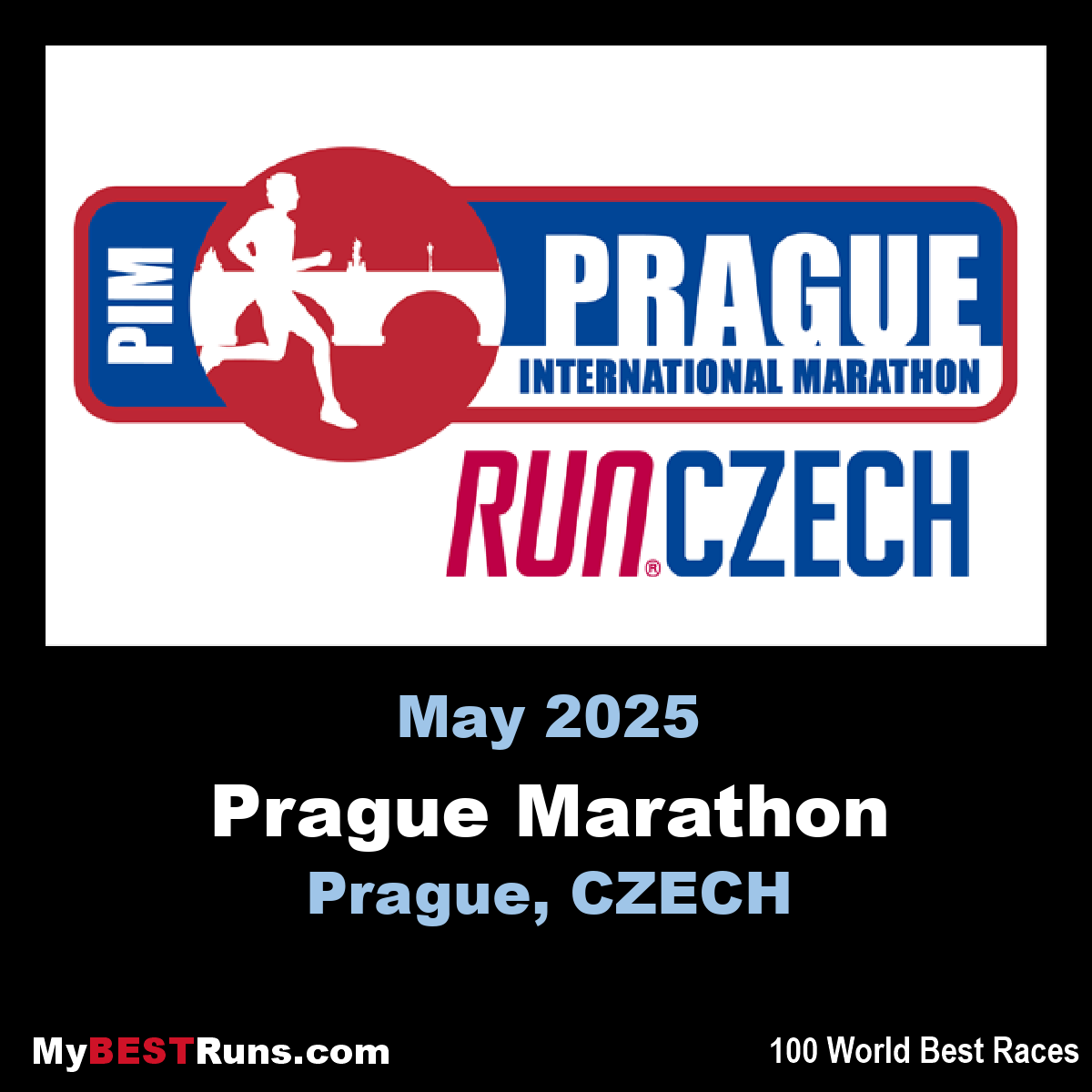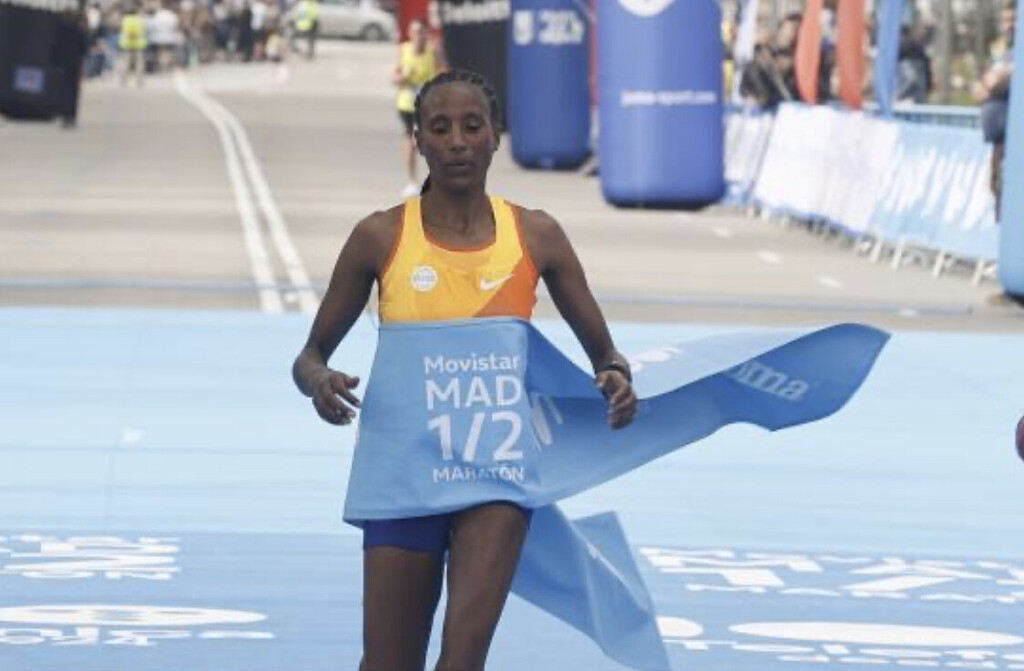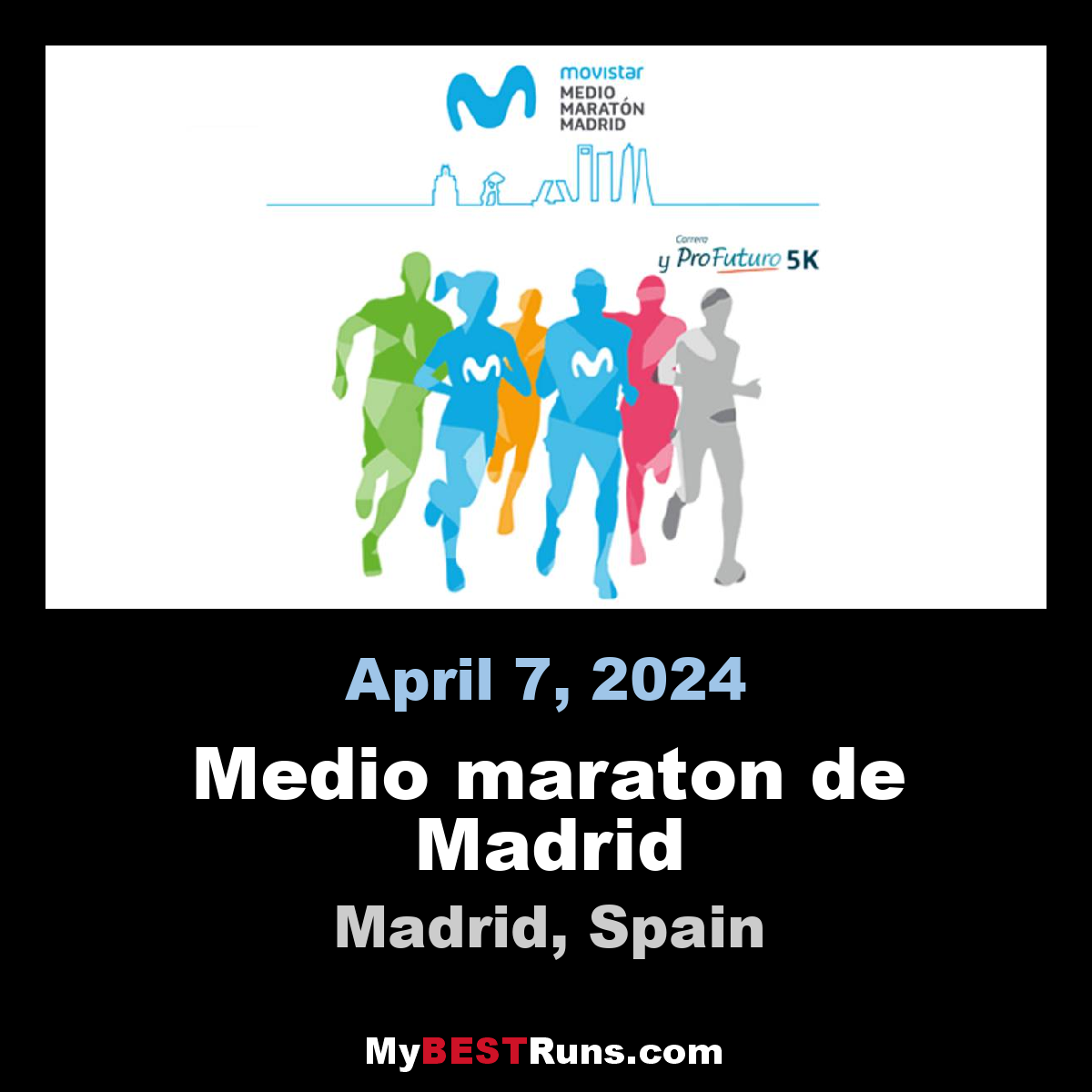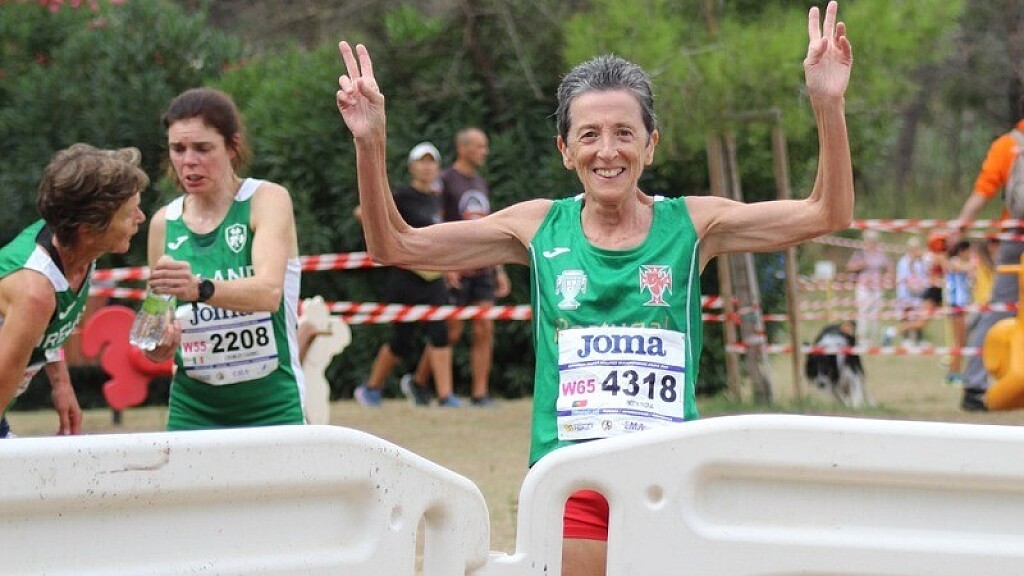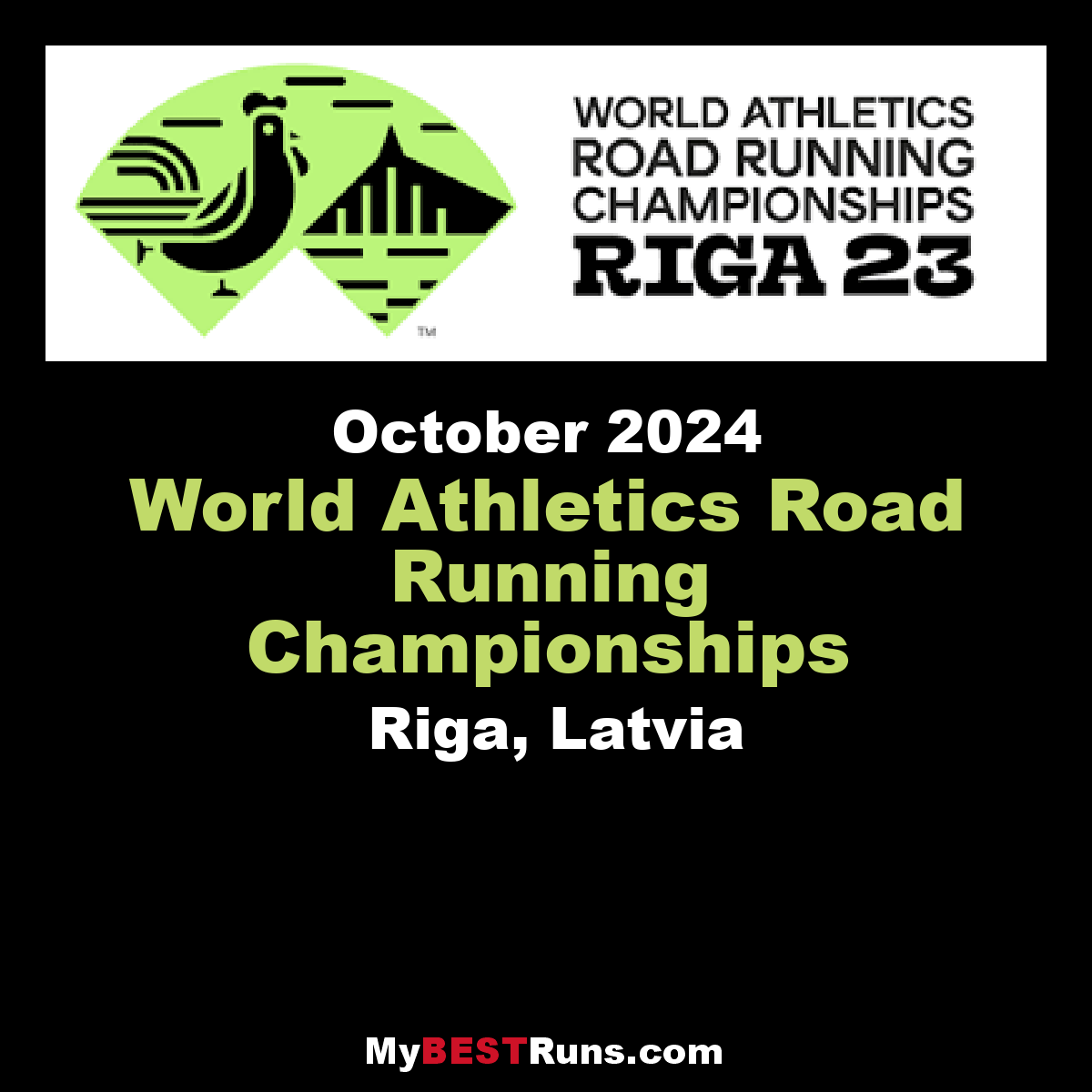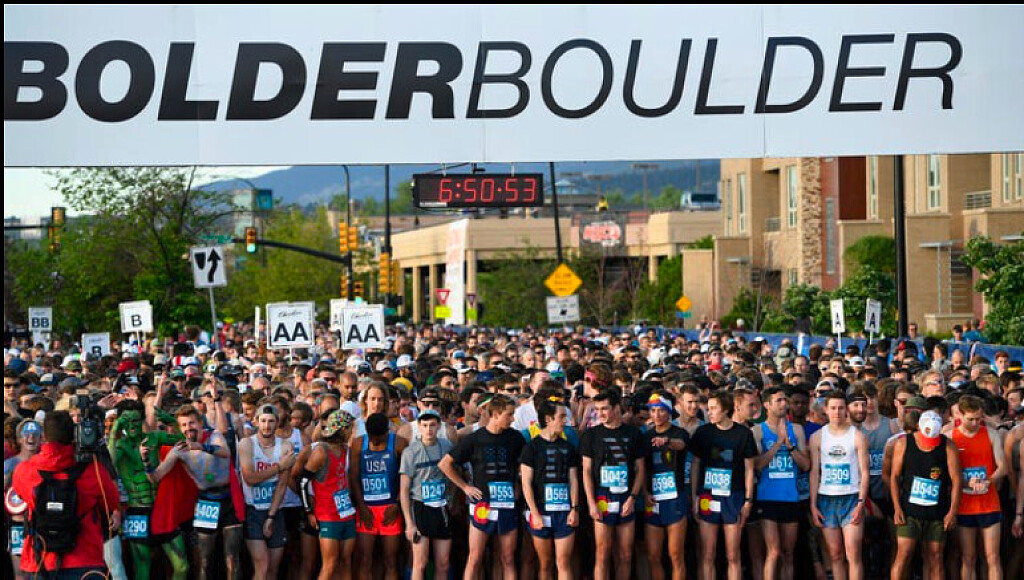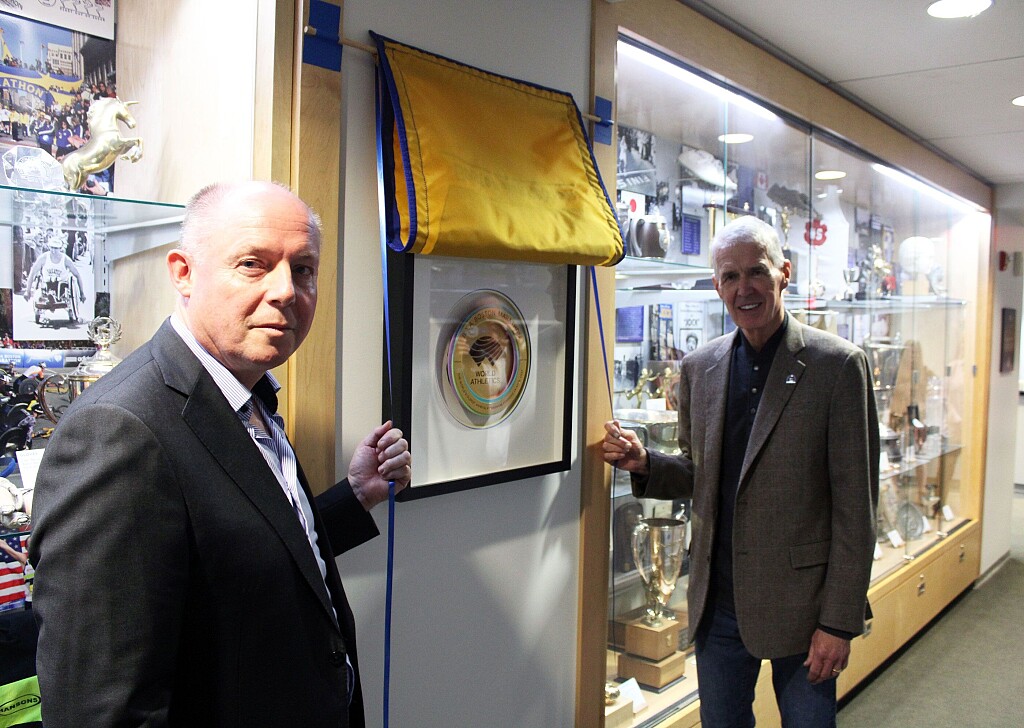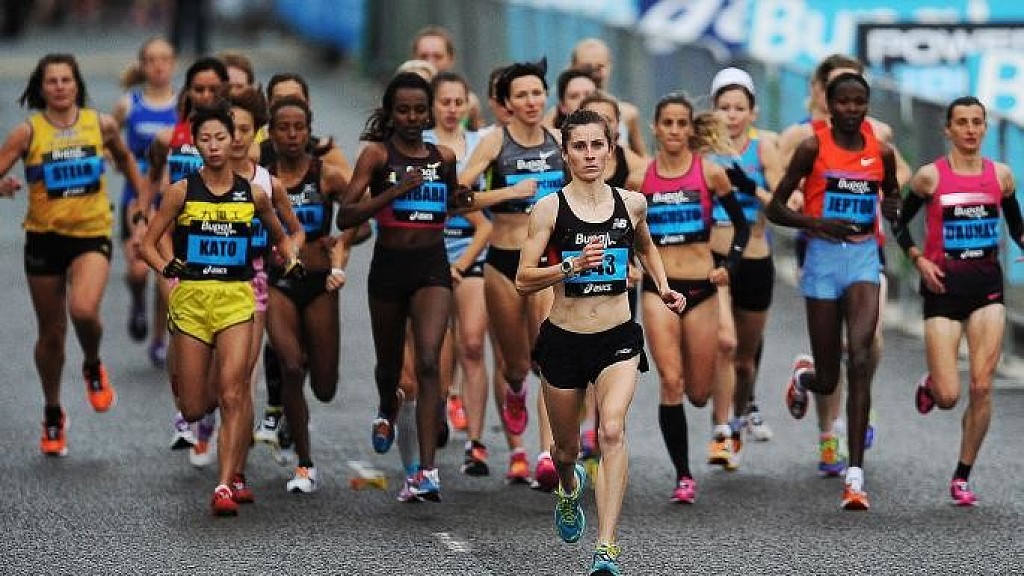Running News Daily
Running News Daily is edited by Bob Anderson. Send your news items to bob@mybestruns.com Advertising opportunities available. Train the Kenyan Way at KATA Kenya and Portugal owned and operated by Bob Anderson. Be sure to catch our movie A Long Run the movie KATA Running Camps and KATA Potato Farms - 31 now open in Kenya! https://kata.ke/
Index to Daily Posts · Sign Up For Updates · Run The World Feed
Articles tagged #Rosa Mota
Today's Running News
Stramilano Half Marathon Honored with World Athletics Heritage Plaque Ahead of 2025 Race
The Stramilano Half Marathon, one of Italy’s most prestigious road races, is set to celebrate its 52nd edition on Sunday, March 23, 2025. This year, the event will be marked by a historic recognition, as it has been awarded the World Athletics Heritage Plaque in the category of ‘Competition.’ This prestigious honor highlights Stramilano’s exceptional contribution to the global history of road running and its impact on the sport over the past five decades.
Stramilano’s Storied Legacy
First held in 1976, the Stramilano Half Marathon has been a stage for legendary performances, earning a reputation as the fastest course in Italy. In 1993, Moses Tanui became the first runner in history to break the one-hour barrier for the half marathon, clocking 59:47 on this very course. The event has consistently attracted the world’s best runners, many of whom have gone on to achieve global dominance in long-distance running.
Notable past champions include:

• Moses Tanui (Kenya) – First runner to break 60 minutes for the half marathon (1993)
• Paul Tergat (Kenya) – Six-time Stramilano winner (1994-1999), former half marathon world record holder (59:17, 1998)
• Grete Waitz (Norway) – Nine-time New York Marathon winner
• Rosa Mota (Portugal) – Olympic and World Marathon Champion
• Priscah Jeptoo (Kenya) – London Marathon winner and Olympic silver medalist
• Ruth Chepngetich (Kenya) – Former Half Marathon World Record Holder
• Rob de Castella (Australia) – Former Marathon World Champion
• Gelindo Bordin (Italy) – Olympic Marathon Gold Medalist
2025 Stramilano Half Marathon Details
This year’s edition will once again take runners through the iconic streets of Milan, starting at Piazza Castello and finishing inside the historic Arena Civica, an 18th-century Napoleonic stadium. The event offers different race categories to cater to runners of all levels:
• Half Marathon (21.097 km) – Competitive race featuring elite and amateur athletes
• 10 km Run – Non-competitive fun run starting from Piazza Duomo
• 5 km Run – Family-friendly race also starting from Piazza Duomo
The World Athletics Heritage Plaque will be permanently displayed at the Arena Civica, Viale Giorgio Byron, the race’s headquarters, following the conclusion of this year’s event.
by Boris Baron
Login to leave a comment
Stramilano Run Generation
All ages, all genres and all preparations’ levels: Stramilano is everyone’s race, the race for whom love sport and want to live unforgettable moments. Both if you’ve been preparing with months of traning or you just want to walk through Milano’s streets, you’re all a part of the big sports people “family” that put on a unique sunday. Like any...
more...Running Outside Your Comfort Zone: How to Push Your Limits and Achieve More
Running outside your comfort zone is about pushing past your usual limits, stepping into a place of discomfort, and embracing the challenge that leads to improvement. It’s the difference between running at a comfortable, familiar pace and pushing yourself to a point where your body and mind are tested.
For an elite athlete, this means running at world-class paces that demand peak physical and mental effort. For an average runner, it means running faster, longer, or with greater intensity than they are used to—whether that’s shaving seconds off a 5K time, running a new distance, or finishing a tough interval workout.
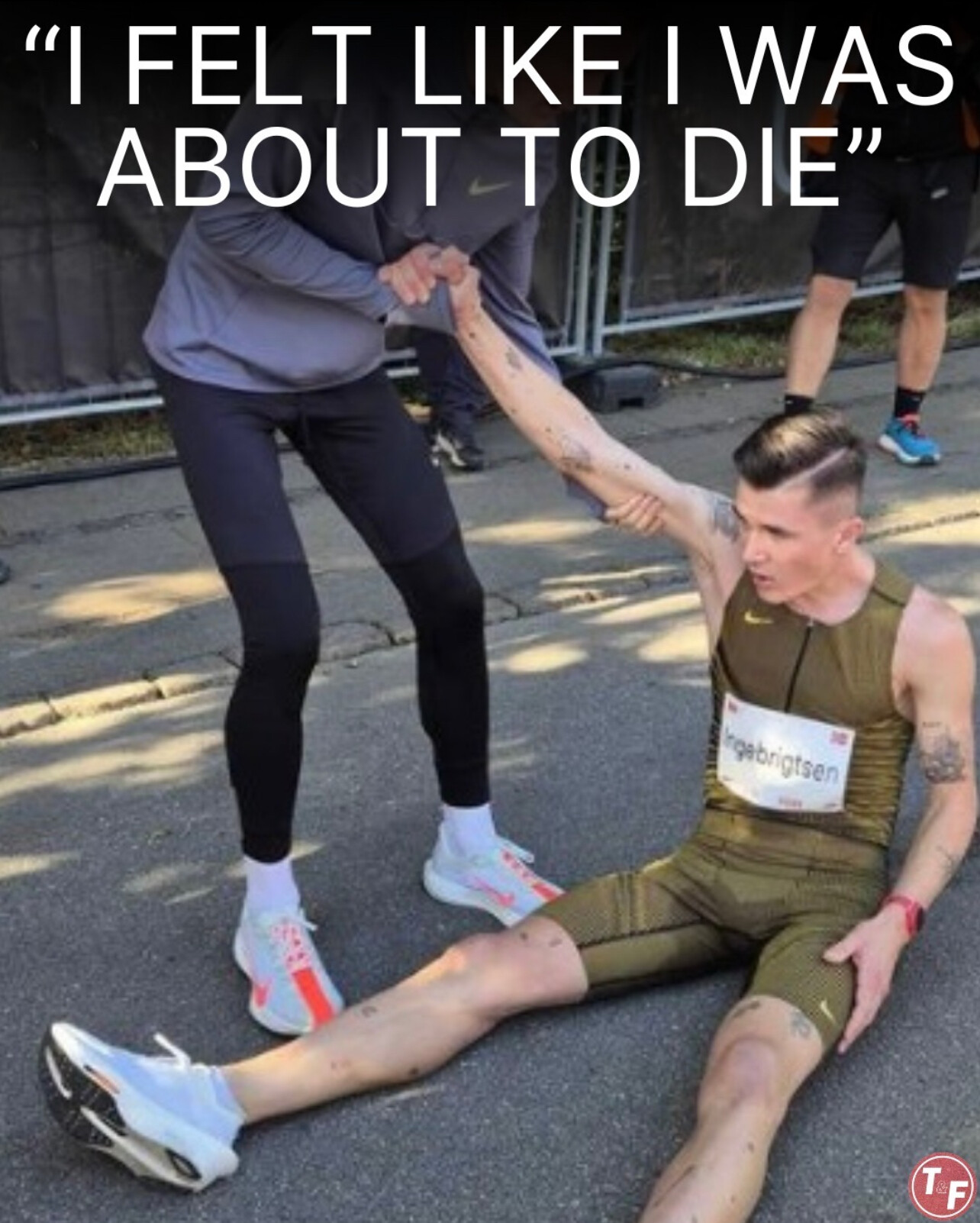
This powerful image captures Jakob Ingebrigtsen at the absolute limits of his endurance, a moment that epitomizes what it means to push beyond the comfort zone in elite racing. Ingebrigtsen, one of the most dominant middle-distance runners in the world, is seen completely spent, collapsed on the ground, relying on assistance just to get up. His quote, "I felt like I was about to die," is not just dramatic-it's a reflection of what it takes to compete at the highest level, where the margins between victory and defeat are razor-thin.
For elite athletes like Ingebrigtsen, racing is about embracing suffering rather than avoiding it. He has trained his body and mind to withstand extreme discomfort, knowing that to achieve greatness, he must run through the pain, not away from it. This image serves as a powerful reminder that whether you're an Olympic champion or an everyday runner chasing a personal best, the only way to truly improve is to push beyond what feels comfortable and into that space where breakthroughs happen.
The key to improving as a runner is learning how to handle discomfort without giving in to it. The body adapts when it’s challenged, but only if you consistently step beyond your comfort zone.
How the Average Runner Can Learn to Push Their Limits
Many runners stay at the same pace for years because they never challenge themselves beyond their current ability. Here’s how an average runner can start running outside their comfort zone.
Run at a Pace That Feels Uncomfortable
Most runners settle into a pace that feels sustainable and manageable. To break through plateaus, introduce faster running into your routine.
Progression runs: Start slow and gradually increase your pace so that the final third of the run is at a challenging but controlled effort.
Threshold runs: Run 10-15 minutes at a comfortably hard pace, where you’re breathing heavily but still in control.
Strides and surges: Add 20–30 second accelerations at the end of easy runs to build speed without fatigue.
Train with Purposeful Discomfort
Pushing beyond your limits doesn’t mean running recklessly—it means training your body to handle discomfort efficiently.
Intervals: Short, fast efforts (e.g., 6 x 400m at 5K pace) followed by short rest periods train your body to sustain effort even when tired.
Hill repeats: Running uphill improves strength and stamina, forcing you to push through discomfort.
Long runs with fast finishes: Ending long runs at a faster pace teaches your body to keep going when tired.
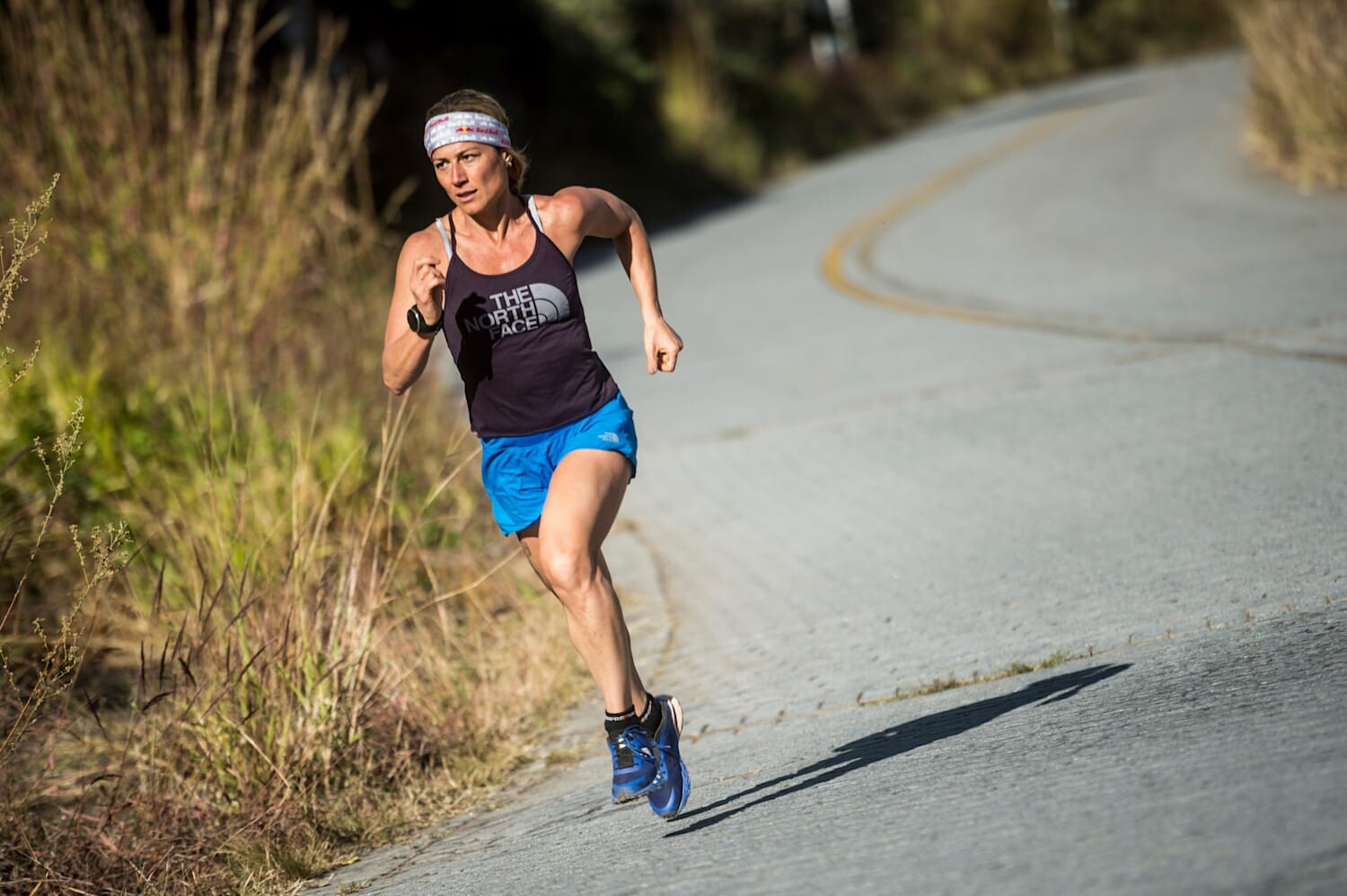
Improve Mental Toughness
Running outside your comfort zone isn’t just physical—it’s mental. When your legs get tired and your breathing gets heavy, your mind will tell you to slow down. Learning to override that voice is crucial.
Mantras: Repeating phrases like “strong and steady” or “I can do this” can help override negative thoughts.
Controlled discomfort: Remind yourself that pain in running isn’t the same as injury—it’s a sign of growth.
Visualization: Picture yourself finishing strong before your run starts. Your body follows what your mind believes.
Race More Often
The best way to step out of your comfort zone is to race regularly. In a race setting, you’re more likely to push yourself harder than you would in training. Even if you’re not at peak fitness, toeing the start line forces you to test your limits.
How Elite Athletes Push Their Limits at World-Class Pacing
When watching professional runners race, it’s easy to think they make it look effortless. The truth is, they are almost always on the edge of discomfort, running at a pace that would break most runners within minutes.
World-Class Pacing and the Pain Zone
Elite runners train to be comfortable with discomfort. Whether it’s a marathoner running under five-minute miles for 26.2 miles or a sprinter giving 100% effort for just 10 seconds, they are conditioned to hold their effort at a threshold most people can’t sustain.
Marathoners like Eliud Kipchoge spend years training their bodies to maintain high speeds without breaking down. His sub-2-hour marathon (averaging 4:34 per mile) was only possible because of relentless training outside his comfort zone.
Middle-distance runners like Jakob Ingebrigtsen in the 1500m race push through extreme fatigue in the final lap, training their bodies to hold off the competition while running at speeds most runners can’t even sprint.
Mental Fortitude at the Elite Level
At the world-class level, running outside the comfort zone is as much mental as it is physical. Elite runners:
Train to tolerate pain – They expect discomfort and use it as a signal to push harder, not slow down.
Use tactical thinking – Instead of panicking when they feel tired, they focus on form, breathing, and staying in the race mentally.
Embrace suffering – They view discomfort as part of the journey, knowing that real improvement only happens when they challenge their limits.
Gene Dykes and Rosa Mota: Masters of Pushing the Limits
Some of the best examples of runners stepping outside their comfort zones come from masters athletes.
At age 70, Gene Dykes ran a marathon in 2:54:23 at the Jacksonville Marathon. His ability to continue running world-class times at an age when most runners have slowed dramatically is a testament to smart training, mental fortitude, and a willingness to embrace discomfort.
Rosa Mota, the 1988 Olympic marathon champion, continues to redefine what’s possible for older runners. In December 2024, at age 66, she ran a 10K in 38:23 at the San Silvestre Vallecana, setting a new world record for the W65 category. Even decades after her Olympic victory, she remains a fierce competitor, proving that world-class pacing and a commitment to pushing limits don’t have an expiration date.
Why Running Outside Your Comfort Zone Matters
If you want to improve as a runner—whether you're chasing a faster 5K, your first marathon, or simply becoming stronger—you have to train beyond what feels easy.
Running outside your comfort zone doesn’t mean reckless overtraining, but it does mean challenging your limits in a controlled, smart way. Whether it’s picking up the pace, racing more often, or simply not backing down when things get tough, stepping beyond what feels comfortable is where real growth happens.
Elite athletes live in this zone during competition. The average runner can train to experience it too—and that’s how true breakthroughs happen.
by Boris Baron
Login to leave a comment
The Science of Longevity in Running: How Some Runners Stay Fast for Decades
Running is often thought of as a young person’s sport, but time and time again, we see athletes defying age, continuing to run and even race well into their 60s, 70s, and beyond. Some runners, like My Best Runs founder Bob Anderson, who started running in February 1962 and is still going strong today, prove that longevity in the sport isn’t just possible—it’s achievable with the right approach.
What allows some runners to maintain speed and endurance over the decades while others slow down? The answer lies in science, training adaptations, mindset, and lifestyle choices. This article explores how runners can stay competitive for life—and perhaps even improve with age.
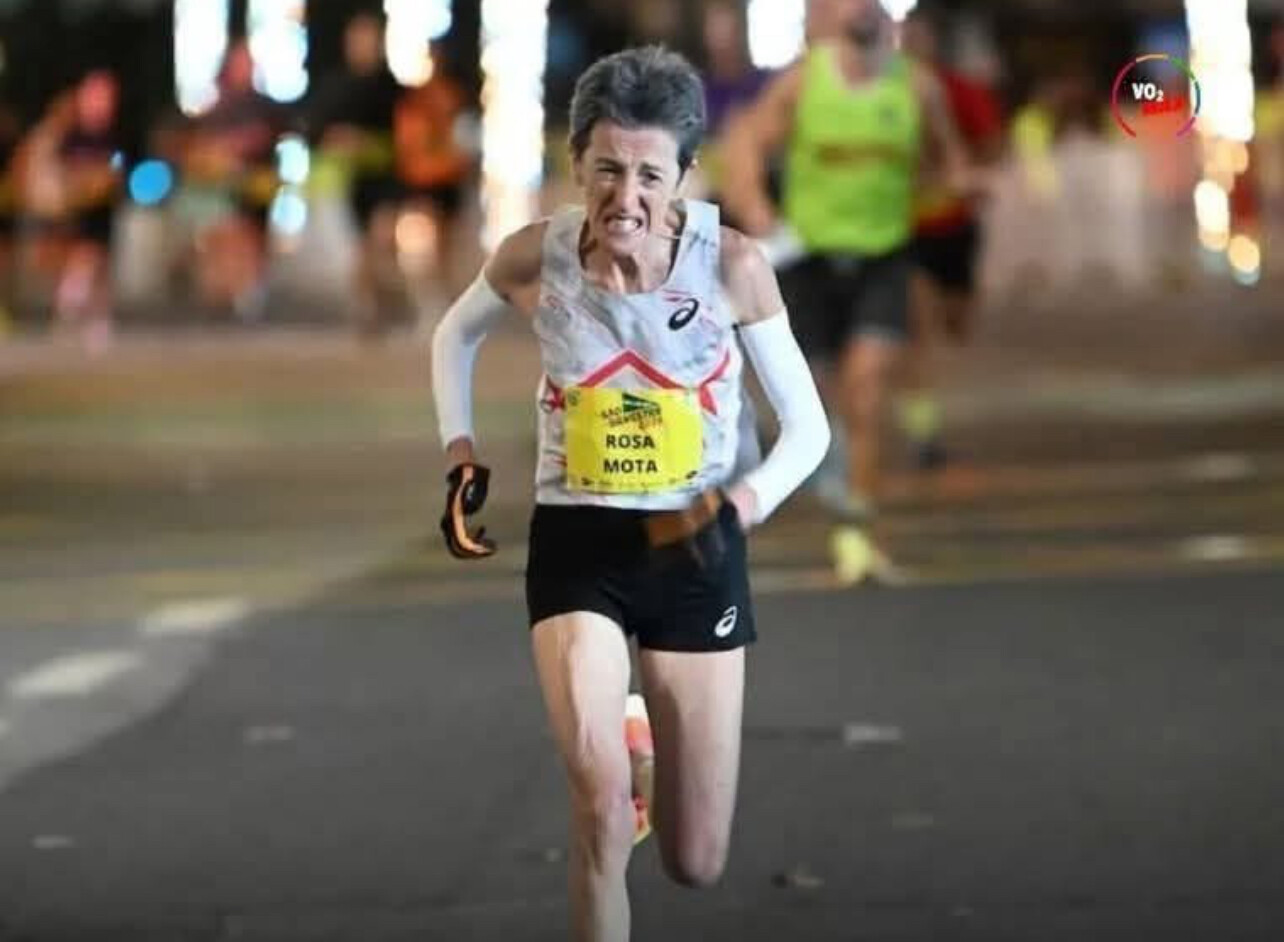
The Science of Aging and Running Performance
Physiologically, runners experience certain changes as they age:
• VO2 max naturally declines at a rate of about 10% per decade after 40. However, regular training can slow this decline significantly.
• Muscle fibers shrink, and fast-twitch fibers deteriorate faster than slow-twitch fibers, impacting speed and power. Strength training and sprint workouts can help counteract this.
• Tendons lose elasticity, and cartilage wear increases, making injury prevention crucial.
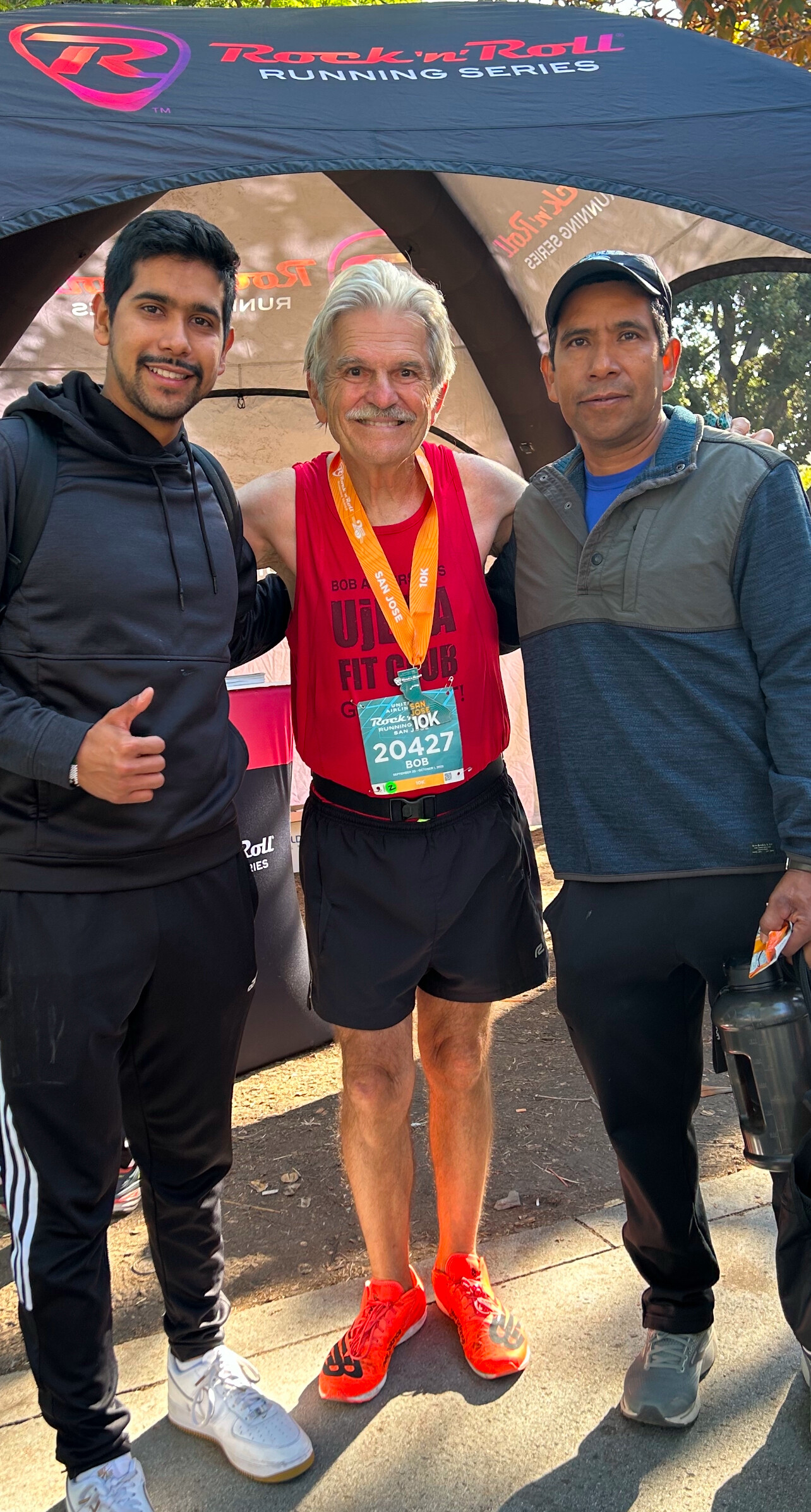
• The body takes longer to recover from hard workouts, making rest, nutrition, and cross-training essential for long-term success.
The good news is that lifelong runners often have stronger hearts, denser bones, and slower biological aging than non-runners. Regular endurance training can reduce the risk of cardiovascular disease, osteoporosis, and cognitive decline.
Training Smart: Adapting Workouts for Longevity
Many runners burn out or get injured because they don’t adjust their training as they age. Here’s how to train smart for decades.
Maintain Speed with Strides and Intervals
Fast-twitch muscle fibers decline faster than slow-twitch fibers, but incorporating short sprints, strides, and intervals helps retain speed. Even just six to eight 100-meter strides at the end of easy runs can keep the neuromuscular system sharp.
Prioritize Strength Training
Strength training two to three times per week can help counteract muscle loss, improve bone density, and prevent injuries. Key exercises include squats, lunges, core work, and hip mobility drills.
Adjust Recovery
Younger runners recover quickly, but for those over 50, rest and active recovery days become more important. Running every day might not be sustainable, but alternating hard workouts with cross-training, such as cycling, swimming, or hiking, can help maintain fitness without overuse injuries.
Keep Mileage Consistent
Aging runners who maintain a consistent but moderate mileage base tend to perform better long-term than those who dramatically reduce or increase mileage. The key is staying active year-round and avoiding long breaks that lead to muscle loss and decreased aerobic capacity.
Nutrition and Recovery: Fueling for the Long Run
Proper nutrition plays a major role in running longevity.
Focus on Anti-Inflammatory Foods
Chronic inflammation contributes to aging and joint pain. Long-term runners benefit from foods rich in omega-3s (salmon, walnuts), antioxidants (berries, leafy greens), and lean proteins (chicken, beans).
Stay Hydrated and Maintain Electrolyte Balance
As we age, our sense of thirst declines, so staying hydrated becomes more critical. Older runners are also more prone to electrolyte imbalances, making magnesium, sodium, and potassium intake vital.
Increase Protein Intake
After 50, the body needs more protein to maintain muscle mass. Aim for 1.2–1.6 grams of protein per kilogram of body weight daily, focusing on high-quality sources like eggs, lean meats, Greek yogurt, and plant-based proteins.
Mental Toughness and Staying Motivated
Longevity in running isn’t just about the body—it’s also about the mind. Many lifelong runners stay motivated by setting new goals, training with a group, and embracing the aging process rather than resisting it.
Bob Anderson, founder of My Best Runs, started running in February 1962 and continues to train and race today. His ability to sustain a high level of performance comes down to consistent training, smart adaptations, and a passion for the sport. His 6:59 per mile pace for 350 miles of racing (50 races totally 350.8 miles over one year) at age 64 is proof that age is just a number when you train right. More recently he ran 49:48 for 10k at age 76.
The Role of Cross-Training and Injury Prevention
Even the most dedicated runners face injuries. The key to longevity is knowing when to rest and when to cross-train.
Some of the best cross-training options for runners over 50 include cycling, swimming, pickleball, hiking, and yoga. Incorporating at least one non-running workout per week reduces injury risk and keeps running sustainable for the long haul.
Gene Dykes and Rosa Mota: Icons of Running Longevity
Bob Anderson is not alone in proving that age is just a number. Gene Dykes, one of the most remarkable masters runners in history, has shattered records in his 70s. At age 70, he famously ran a 2:54:23 marathon.
His secret? A high-mileage approach combined with interval training and a love for the sport that keeps him motivated year after year.
On the women's side, Rosa Mota, the legendary Portuguese marathoner and 1988 Olympic gold medalist, continues to inspire runners worldwide. Even in her 60s, she remains an active ambassador for the sport, showing that passion, consistency, and smart training allow runners to stay competitive for life.
In December 2024, at age 66, Rosa Mota set a new W65 10K world record by completing the San Silvestre Vallecana race in 38:23.
Both Dykes and Mota exemplify the idea that the body can continue to perform at a high level if treated right. Their stories, along with those of runners like Bob Anderson, prove that longevity in running is not just about genetics-it's about persistence, training adaptations, and maintaining the joy of ring.
Final Thoughts: Running for Life
Longevity in running isn’t about fighting age—it’s about embracing the journey, adapting intelligently, and staying passionate. The best runners understand that while paces may slow, the love of the sport grows deeper with time.
Whether you’ve been running since February 1962 like Bob Anderson or are just starting in your 50s or 60s, consistency, smart training, and joy in the process are the real secrets to running for life.
by Boras Baron
Login to leave a comment
Rosa Mota: Defying Age with a 38-Minute 10K World Record at 66
At 66 years old, Rosa Mota, Portugal’s marathon icon and former Olympic champion, continues to prove that greatness knows no age. Most recently, she stunned the world by setting a new age-group world record for the 10K, finishing in an astonishing time of 38:25.This achievement not only cements her status as a legendary athlete but also highlights her remarkable longevity in a sport dominated by younger competitors.
The record-breaking performance occurred during the San Silvestre Vallecana 10K race, where Mota finished with a time of 38:25, significantly improving her previous W65 world record of 38:45, set in Valencia almost a year prior.
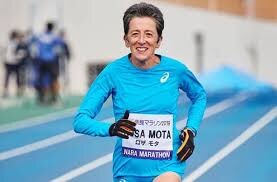
Rosa Mota rose to international fame in the 1980s, dominating the marathon scene and becoming one of the greatest long-distance runners in history. Born in Porto in 1958, she grew up with a love for running and quickly emerged as a standout athlete.
Her career highlights include winning the marathon gold medal at the 1988 Seoul Olympics and bronze at the 1984 Los Angeles Olympics. She also won the inaugural women’s marathon at the European Championships in 1982, setting the tone for her incredible career. Rosa claimed victories in major marathons worldwide, including Boston, Chicago, and London, and her legacy includes a World Championship title in 1987.
Pushing the Limits at 66:
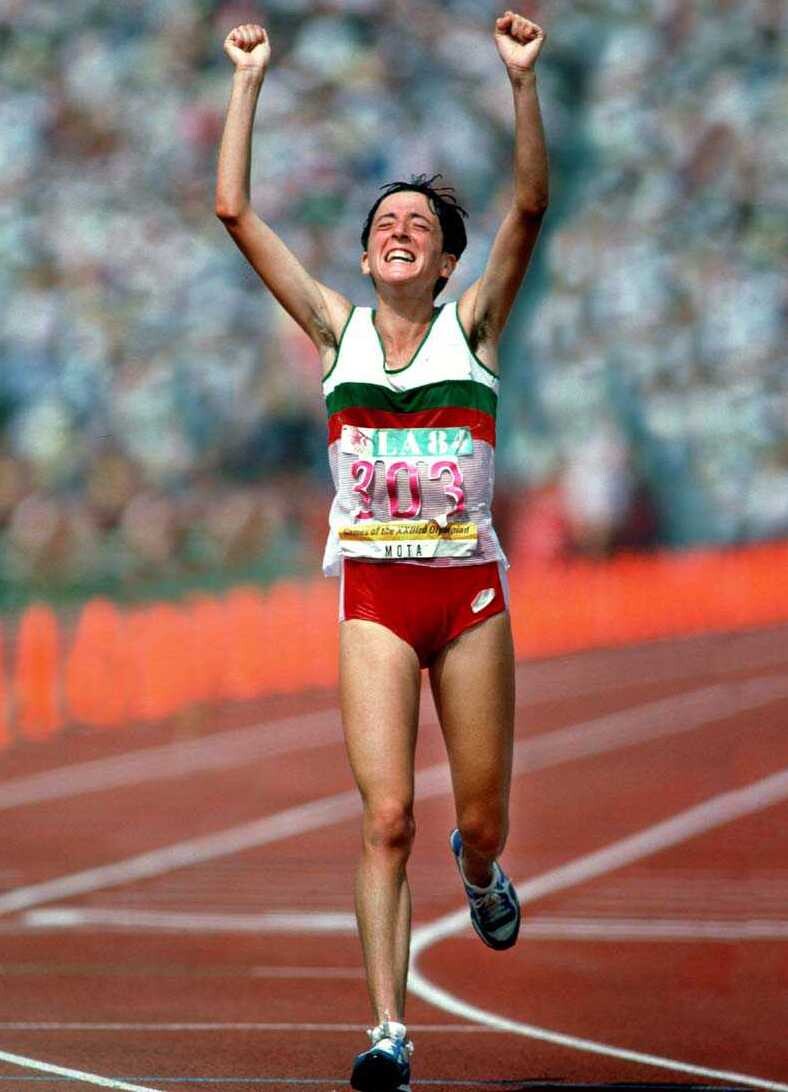
Rosa’s most recent feat is part of a series of record-breaking performances that have reignited her fame in the running world. Earlier this year, she set a W65 world record in the half marathon with a time of 1:25:52, followed by her stunning 10K record of 38:25. These times are exceptional not just for her age group but for athletes of any age, underscoring Rosa’s incredible dedication and talent.
Rosa attributes her success to a lifelong passion for running and disciplined training. “I never stopped loving this sport,” she said after her race. “I still wake up every day excited to run, to challenge myself, and to show others that age is not a limit—it’s an opportunity.”
The Secret Behind Rosa’s Success:
Rosa’s training has evolved over the years, focusing on smart, consistent workouts that prioritize recovery. She combines speedwork, long runs, and cross-training with strength exercises and yoga to maintain her agility and endurance. A balanced Mediterranean diet, rich in fruits, vegetables, and lean proteins, also contributes to her vitality.
“I listen to my body more now than I did in my younger days,” she explains. “Rest and recovery are just as important as the training itself.”
A Beacon of Inspiration:
Beyond her athletic achievements, Rosa Mota is a symbol of resilience and empowerment. She remains an active figure in the running community, advocating for health, fitness, and women’s participation in sports. Through her recent performances, she has inspired not only her peers but also younger generations of runners.
“I want people to know it’s never too late to dream big,” Rosa says. “Set goals, stay consistent, and believe in yourself. That’s how records are broken—on and off the track.”
Legacy of Greatness:
Rosa Mota’s 38-minute 10K record is more than just a number—it’s a testament to the power of determination, discipline, and a lifelong love for running. As she continues to push boundaries, she reminds us all that the human spirit can triumph over any obstacle, including the passage of time.
by Boris Baron
Login to leave a comment
Remembering Kristiansen’s barrier-breaking sub-15-minute 5000m
When Ingrid Kristiansen lined up for the 5000m at the 1984 Bislett Games, she was known as the former international cross country skier who had just become Europe’s fastest ever woman in the marathon.
It was only six weeks previously that the 28-year-old mother from the Viking stronghold of Trondheim had made her major breakthrough in athletics, storming through halfway in the London Marathon in a blistering 1:10:52 en route to a winning time of 2:24:26.
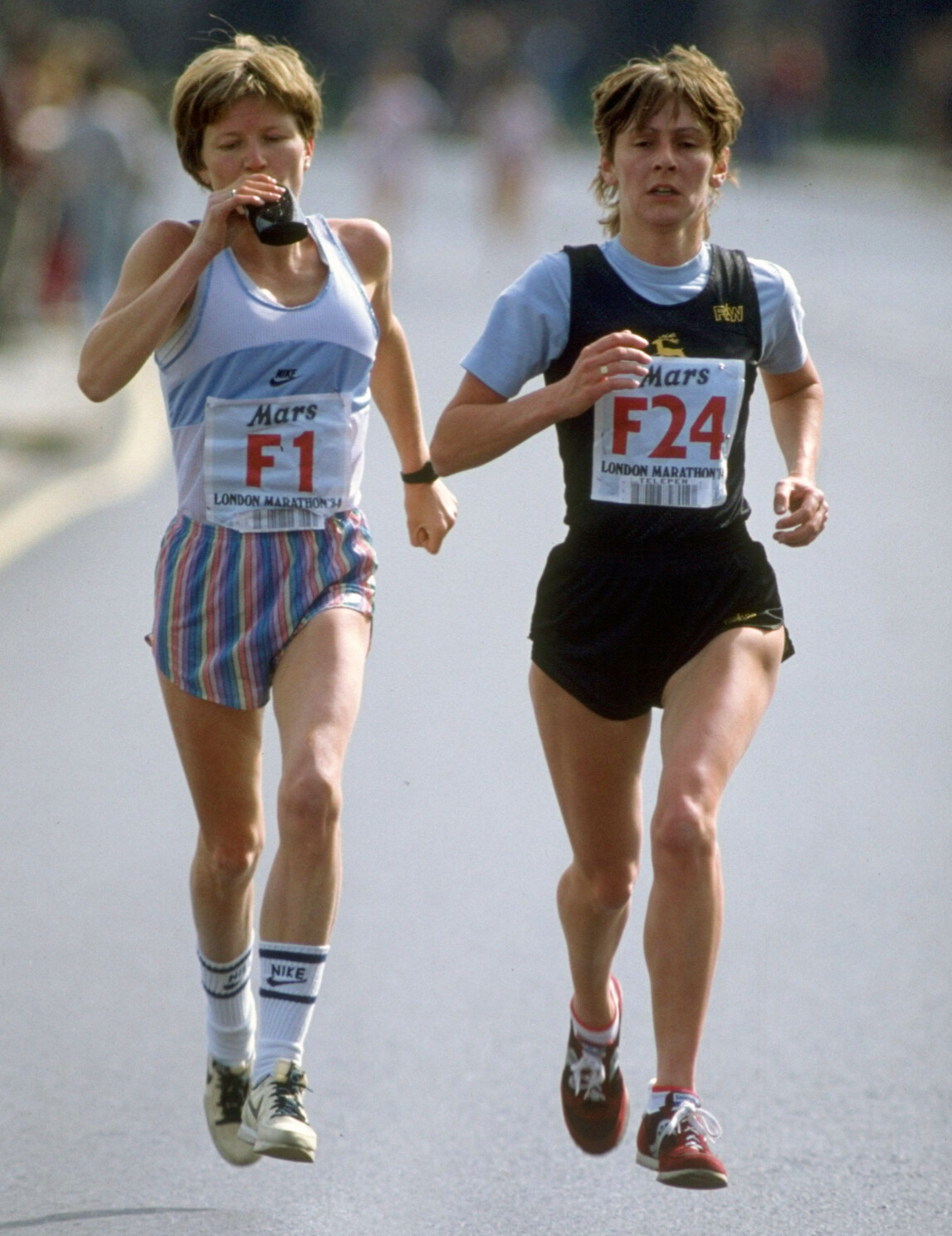
In the process, Kristiansen first peeped out of the considerable shadow of the great Grete Waitz as another formidable Norse to be reckoned with on the global running stage.
The London run elevated her to second spot on the world all-time list, behind the 2:22:43 recorded by Joan Benoit of the US in Boston the previous year, but ahead of Waitz’s Norwegian and European record of 2:25:28.7.
It was only fitting that the burgeoning Kristiansen should claim her first world mark on home ground, in the heart of Norway’s capital city on the hallowed Bislett Stadium track.
That was 40 years ago, on the evening of 28 June 1984.
‘Dead tired… pushed on by the cheers of the crowd’

The official world record for the women’s 5000m stood at 15:08.26 – to Mary Decker, or Mary Tabb as she had been when she set the figures on home ground at the 1982 edition of the Pre Classic.
In Apartheid South Africa on 5 January 1984 – and therefore ineligible for recognition – the barefoot Springbok wunderkind Zola Budd had run 15:01.83 in Stellenbosch. By June of the same year, Budd had already become a British citizen and was on her way to being rubber-stamped in the British team for the Los Angeles Olympics.
That night in Oslo, though, Kristiansen’s only rival was the Bislett Stadium clock.
After following Maggie Keyes of the USA through 1000m in 3:02.0, Kristiansen surged clear of the field, reeling off laps of 70-72 seconds.
Passing 3000m in 8:59.8, Kristiansen finished with the flourish of a 68.4 final lap before crossing the line in 14:58.89.
Off marathon training of 170-180km a week, she had become the first woman in history to beat 15 minutes for 5000m.
“I was dead tired during the last two laps but I was pushed on by the cheers of the crowd,” she confessed.
Aurora Cunha, the future three-time world road race champion from Portugal, finished a distant runner up in 15:09.07, followed by Briton Angela Tooby (15:22.50).
Back in sixth was Portugal’s European marathon champion Rosa Mota (15:30.63) – followed by Tooby’s twin sister, Susan (15:44.58), future mother of 2022 world 1500m champion Jake Wightman.
Holding a distance world record triple
Kristiansen was to go quicker over 12.5 laps. At London’s Crystal Palace in 1985, she clocked 14:57.43 but lost the world record to Budd, a clear winner in 14:48.07.
In Stockholm in 1986, however, Kristiansen reclaimed the record with a stunning 14:37.33.
That year she was at her zenith on the track, improving her own 10,000m world record by almost 46 seconds with a 30:13:74 run at Bislett.
Kristiansen was the first runner in history to simultaneously hold world records for 5000m, 10,000m and the marathon.
Returning to the London Marathon in 1985, she brought the women’s 2:20 barrier into sight with a 2:21:06 triumph that stood as a world record for 13 years.
Kristiansen also became the first athlete to claim world titles on the track, on the road and over cross country. Twice a winner of the 15km world road race championship, she won the world 10,000m title on the track in Rome in 1987 and the world cross country crown in Auckland in 1988.
Big heart and big lungs
Many attributed Kristiansen’s phenomenal success to the physiological benefits she had gained from giving birth to her first son, Gaute, in 1983. She felt it was more the edge she had gained from years of competitive cross-country skiing.
“I think it came from my cross-country skiing career,” she asserted. “It gave me a big heart and big lungs, and when I got my legs trained for running I was maybe a little bit ahead of the other runners at the time.”
As a cross-country skiing prodigy, Kristiansen won the European junior title in 1974, was selected as a reserve for the Winter Olympics in Innsbruck in 1976, and finished 15th in the World Championships 20km race in 1978.
She decided to concentrate on competitive skiing for several years after making the Norwegian team for the 1971 European Athletics Championships as a 15-year-old 1500m runner, Ingrid Christensen. But she got bumped off the track in her heat in Helsinki and failed to finish the race.
Her roommate in the Finnish capital was a 17-year-old called Grete Andersen, who finished eighth in the other 1500m heat, missing the cut for the final.
She also made a name for herself in future years: as Grete Waitz, the first of Norway’s barrier-breaking distance-running duo.
by World Athletics
Login to leave a comment
How Emil Zátopek helped create the Prague International Marathon
Founder of Prague International Marathon Carlo Capalbo opens up about meeting in 1995 that changed everything
This weekend’s Prague International Marathon will be the 29th edition of the event and, courtesy of organizers RunCzech, has become one of Europe’s fastest-growing road races.
It was founded back in 1995 by Carlo Capalbo, alongside 1988 Olympic men’s marathon champion Gelindo Bordin and quadruple Olympic gold medalist Emil Zátopek.
Zátopek, nicknamed the “Czech Locomotive”, is one of the country’s greatest ever athletes. He is best known for being the only person in history to claim three Olympic gold medals over the 5000m, 10,000m and the marathon in the same Games, at Helsinki 1952.
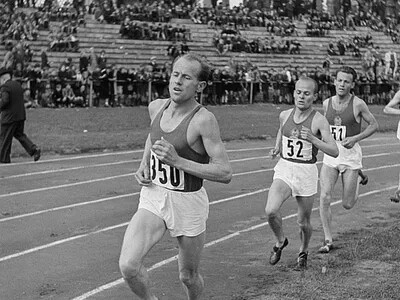
Incredibly, Zátopek’s gold in the marathon came in his first ever race over 26.2 miles.
The Czech athlete was also the first runner in history to go sub-29 minutes in the 10,000m and went undefeated in his first 38 races over the distance from 1948 through to 1954.
Zátopek’s legacy isn’t just defined by his athletics achievements though. The 8000-plus runners that will take to the streets on Sunday (May 5) for the Prague International Marathon – starting and ending around the Old Town Square – can thank Zátopek, Capalbo and Bordin for their vision back in 1995.

“You know, nearly 30 years ago I had this simple and beautiful dream,” Capalbo tells AW. “A friend of mine [Bordin] said to me that we should organize a marathon. So we went to see Mr Zátopek. That was the start of everything.
“When we went and met Mr Zátopek, we started off with a coffee and bábovka. At the end we tasted some lovely brandy that Mr Zátopek had. After that, we’d devised the marathon but we needed to work out where the people would run.
“So Mr Zátopek decided to draw the course for the Prague International Marathon on a napkin. The rest is history.”
The elite winners in the inaugural year of the event were Ethiopian Turbo Tummo (2:12:44) and Ukrainian Svetlana Tkach (2:38:33).
Since then, the course records have plummeted and are currently held by Alexander Mutiso (2:05:09 – 2023) and Lonah Salpeter (2:19:46 – 2019), although sadly Zátopek did not live to see the recent races as he died in 2000 aged 78.
Prague is a historically quick meet and the fact that the IOC have extended the qualification period for the Olympic marathon past the April 30 date, to include the Prague International Marathon, says a lot.
It means runners from a multitude of continents have flocked to the Czech Republic to meet the standard.
“The Prague International Marathon is a very prestigious event for both the IOC and World Athletics,” Capalbo says.
“There are so many people running to get the standard. The Olympics is the pinnacle of sport and it’s a celebration.”
Capalbo is also keen to stress of the importance of the masses. He states that running is much more than just one individual and his mission is to create sports events to make “people happy and healthy”, plus making the sport “more watchable for the general public”.
“This is not a normal job and running is not a normal sport,” he adds. “It’s a little bit specific. We wanted to give the perception that the winners of running are those who finish the race, not just those first across the line. The marathon is a fantastic advertisement for the city and it’s great for people’s mental health.
“We are a small country in the Czech Republic and many people come from abroad to the marathon. It’s a great income for Prague. This generates happiness and love for an event which is a tradition for us.”
There will also be the added element of “Battle of the Teams”. Successfully introduced last year, the idea is that both masses and elites are split into teams. It means that the placing of every runner matters.
This year, there will be four teams: Team Mattoni, Team Prague Airport, Team Turkish Airlines and Team Volkswagen.
“There is still the elephant in the room,” Capalbo says. “The masses don’t know the name of the winners. It’s why we’ve done Battle of the Teams so the people taking part in the marathon can look at the names of the elite athletes.
“We want to get the people close to the elite athletes. They also need European legends like Paula Radcliffe, Sebastian Coe and Rosa Mota to look up to. When you go to watch a football match you go crazy for your team and that’s what I need to see in running.”
by Tim Adams
Login to leave a comment
Prague Marathon
The Volkswagen Prague Marathon, established in 1995, has evolved into a premier event on the international running calendar, renowned for its scenic course through one of Europe's most picturesque cities. The marathon's route meanders through Prague's historic streets, offering runners views of iconic landmarks such as the Charles Bridge and Old Town Square. The predominantly flat terrain provides an excellent...
more...Kipkorir and Kebeda win a record Madrid Half Marathon
The Kenyan and the Ethiopian claimed victory in the 23rd edition of the event, marked by the record number of participants with 21,000 runners
Kipkorir and Ethiopian Aberash Shilima Kebeda were awarded victory at the twenty-third edition of the Madrid Movistar Half Marathon, marked by the participant record with 21,000 runners and the presence as godparents of Portuguese Rosa Mota and Ethiopian Haile Gebrselassie
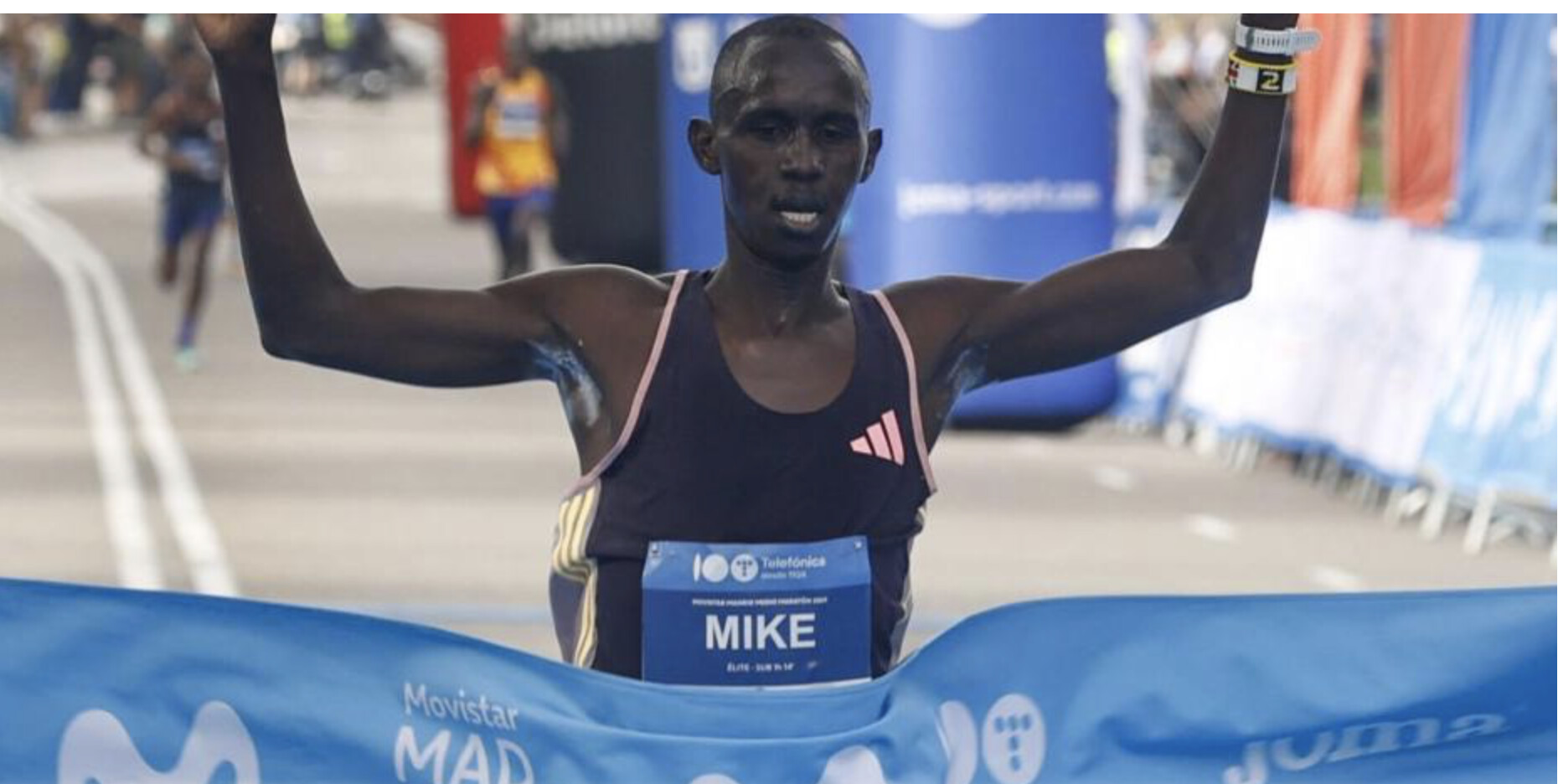
The Kenyan Mike Kipkorir and the Ethiopian Kikkorir took the victory in the men's category after a final attack that found no response from their pursuers, reaching the finish line in 1h01:07, thirteen seconds less than the Ugandan Ezekiel Mutai.
The first Spaniard at the finish line was Ayad Lamdassem, tenth at the finish line, with 1h06:45.
In the women's category, the Ethiopian Aberash Shilima Kebeda dominated the test quite well to take the victory with 1h08:31, almost a minute and a half ahead of her pursuers, the Kenyans Beatrice Nyaboke Begi and Vivian Jerotich Kosgei, second and third, respectively.
Clara Simal from Madrid, from the Marathon Sports Group, organizer of the event, was once again the first Spanish finisher, also repeating the ninth place overall that she already achieved in 2023.
ProFuturo Career
The ProFuturo 5km Race was also held parallel to the Movistar Madrid Half Marathon. This solidarity test was born in 2016 with a clear objective: running for education.
The victory went to Claudia Moreno (20:15) in the women's category and to Sergio Salinero (17:20) in the men's category
The Paralympic athlete Lorenzo Albaladejo, considered the best athlete with cerebral palsy in the history of Spain in speed events, also completed the test, as did Rosa Mota, the Portuguese marathon runner, holder of the triple crown with an Olympic, World Cup and European marathon.
Login to leave a comment
Medio Maraton de Madrid
Live running as ever. There is no insurmountable barrier in the Half Marathon of Madrid! The most spectacular and well-known Half Marathon is back. Lace up your running shoes and test yourself against the clock around the city centre. Dream with your goals and make them come true! ...
more...Portuguese Rosa Mota breaks half marathon world record for veterans running 1:26:16 in Riga
Portuguese Rosa Mota broke the half marathon world record for athletes between 65 and 69 years old, completing the distance in 1:26:16 hours, taking more than six minutes off the previous best mark.

In the parallel race to the World Road Championships, the Olympic marathon champion in Seoul 1988 was 13th overall and won the race in her age group, surpassing the mark of Swiss Emmi Luthi, who had run in 1:32.56 in 2009.
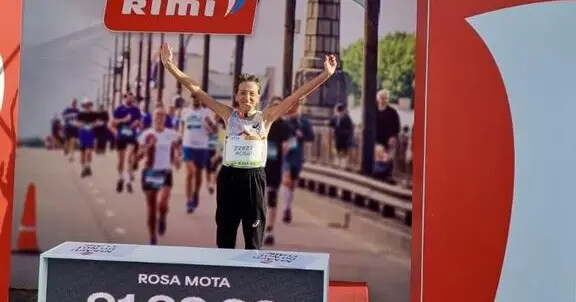
Rosa Mota was more than 22 minutes behind the runner-up, Finnish Kaarina Back (1:48.41).
Last week, Rosa Mota had won the European cross-country veterans championship, at the same level.
Login to leave a comment
World Athletics Road Running Championships
The inaugural World Athletics Road Running Championships, which will take place on September 30 and October 1, 2023, in Riga, will be the most significant public sporting and athletics event in the history of the Baltic countries. A flat, single-lap half-marathon course in the Baltics' largest city. All courses are traffic-free. This unique global running festival, which will crown the...
more...How the Bolder Boulder 10K Became One of the World’s Most Cherished Road Races
5,000 runners are expected to run this year’s Memorial Day 10K on May 29
At bedtime last week, legendary American distance runner Melody Fairchild regaled her 7-year-old son Dakota with tales of the Bolder Boulder 10K he plans to run this year.
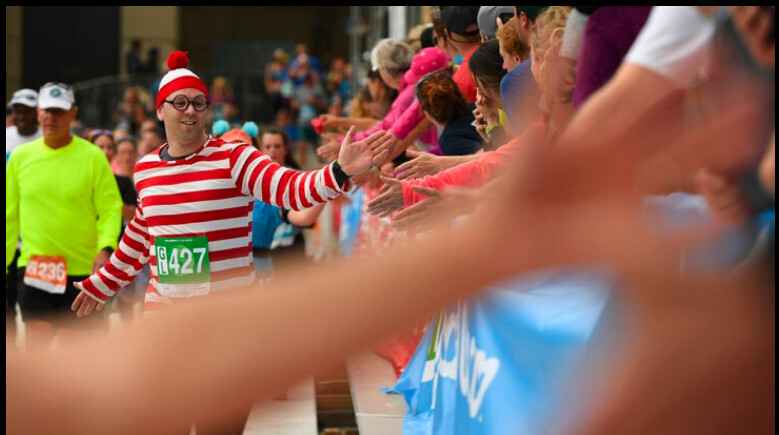
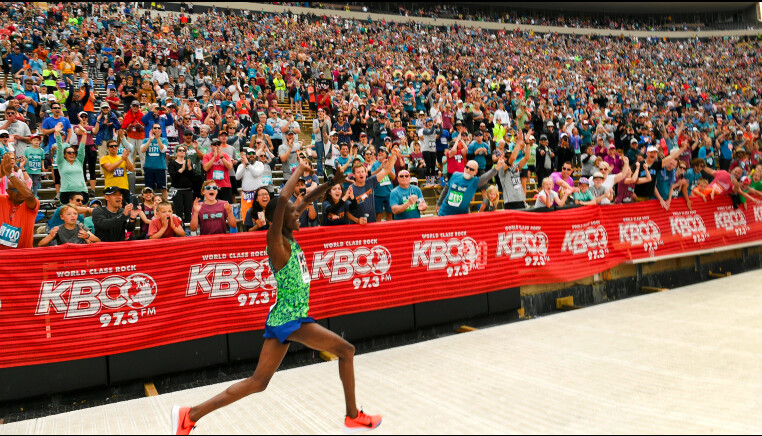
One of the biggest road races in the world for the past several decades, the race sends 40,000 runners through the streets of Boulder, Colorado, on a point-to-point race that ends at the University of Colorado (CU) football stadium, full of cheering spectators and fellow runners.
“I told him it’s an amazing feeling to run into that stadium,” Fairchild says. “When you hit the field, the whole crowd is cheering for everybody. You feel like they’re cheering for you. He had this huge smile on his face.”
And if 50,000 people cheering isn’t enough, there’s also the famous slip-n-slide, numerous bands playing on the course, runners and spectators wearing outrageous costumes, and the military jet flyover by the Colorado Air National Guard you can feel in your bones. Named America’s All-Time Best 10K, it’s likely to be one of the biggest parties you’ll ever attend.
Fairchild recounted for Dakota her experience as the U.S. captain for the Bolder Boulder’s first International Team Challenge professional race in 1998.
“I remember looking out the window and seeing the stadium full. I was so nervous, I thought I was gonna vomit all over the floor,” she says. “When I walked out and they introduced me as the local hometown girl, the whole crowd roared.”
Fairchild ran her first Bolder Boulder at age eight. She went on to win the citizens’ race three times (1989, 1990, 1991) when she was a record-setting high schooler, became an All-American and NCAA champion at the University of Oregon, and then qualified for the U.S. Olympic Trials in the 10,000-meter run and marathon as a professional runner. But the Bolder Boulder has always held a special place in her heart, which is why she has continued to run it through the years and why she’s so eager to introduce Dakota to it.
The idea for the Bolder Boulder germinated in the mind of a father watching his five children participate in all-day track meets. It was the summer of 1978 at the upswing of the original American running boom, and runner and local businessman Steve Bosley had grown frustrated with the disorganized events and parents berating their children for not running fast enough.
Bosley, then 37, reached out to his friend, Boulder resident and international running icon Frank Shorter, a two-time Olympic medalist in the marathon, for help designing a race that would serve their community and promote the sport of running. The race would not only become a Colorado icon, it set a gold standard for road races around the world and helped elevate women’s running in unprecedented ways.
During the spring of 1979, Cliff Bosley, the current race director, went door to door with his Boy Scout troop, passing out posters to encourage neighbors to run his dad’s inaugural race. The poster announced a 4,000-participant cap and enticed Boulderites to “Run with Frank Shorter and Ric Rojas!” for a mere $6.50 entry fee. (Rojas was another local elite athlete who would go on to win the inaugural race in 1979. His daughter, Nell Rojas, a current professional runner, won the women’s citizen’s race 40 years later in 2019.)
Bosley recalls giving a man in his front yard a poster who threw it back in his face in disbelief. “‘Yeah right, 4,000!’ the man scoffed. “I was just a 12-year-old kid. You believe everything your parents tell you. I thought, ‘Dad says it could happen—why won’t it?!’”
The inaugural race saw 2,700 registrations. The next year, it doubled in size and live entertainment was added to the celebration. Participation continued to soar in the ensuing years and decades, eventually reaching 50,421 in 2010. With an average of 45,000 finishers over the past 10 years, it’s now the seventh-largest road race in the nation and the largest Memorial Day celebration in the U.S.
From its inception, the Bolder Boulder 10K offered equal prize money for the female and male winners. In 1984, it created a separate elite race from the citizens’ race. There was also a deliberate split in the women’s and men’s elite race so that both races could be showcased equally and covered live on the local TV broadcast. Today, it offers one of the largest non-marathon prize purses in the U.S., but this did not come without a lot of work.
Initially road races were precluded from paying prize money to athletes because it changed their amateur athlete status, preventing them from competing in the Olympics. In the early 1980s, Steve Bosley, then the president of the Bank of Boulder, worked with two local attorneys, Frank Shorter, and TAC (The Athletics Congress which was then the name of the national governing body for the sport; now it’s known as USATF), to create a mechanism using trust accounts for athletes to earn prize money. It was then paid into athletes’ individual trust accounts so they could draw living and training expenses. At the time these accounts were called TACTRUST Accounts, and the Bank of Boulder was the steward of 95 percent of all of these accounts on behalf of both American and international athletes from around the world.
One of the most circulated photos of the Bolder Boulder 10K is that of Shorter, the 1972 Olympic marathon champion, winning the 1981 race— the first time the race finished in the University of Colorado’s Folsom Stadium. But that same year, Ellen Hart, then 23, won the women’s race—although she says there was no finish line tape for the female winner.
“It was the most exciting thing I had ever seen,” she recalls. “Since I was a little girl, I had wanted to go to the Olympics. I thought, Oh my god. This is like the Olympics! I traveled to races all over the world and the BB was my favorite race.”
Hart would move to Boulder in 1982, and then win the race again in 1983 before the four-year reign of Portugal Olympian Rosa Mota. In many ways, Hart says, her success in the Bolder Boulder launched her career as a professional athlete.
She went on to place 11th at the inaugural women’s U.S. Olympic Trials Marathon in 1984, set an American record in the 30K, and won 18 world championship titles in triathlon and duathlon racing. “In terms of women’s sports, the Bolder Boulder was certainly more forward-thinking than any other race I ever attended,” Hart says.
The race organization was also ahead of its time when it began the Women’s High Altitude Training Camp, something it did not offer for men, in 1989. The 100-day program was designed to bring five talented post-collegiate female runners to Boulder to train prior to racing Bolder Boulder. Runners were placed in volunteer host families, provided an elite coordinator and a trail guide, and given access to a local gym and the university’s track to train.
New Jersey runner Inge Schuurmans McClory was a member of the 1990 team.
“I really didn’t feel worthy of national attention, but I applied for the program not even thinking I was going to get in,” she says. She was not only accepted, but she fell in love with Boulder and stayed.
“I went to graduate school here. I met my husband here. I coached cross country and track at CU. It sort of was the launching pad for the rest of my life, and I owe it to the Bolder Boulder and that high-altitude training camp,” says McClory, now a physician’s assistant who has trained cardiac patients—the Brave Hearts—for the Bolder Boulder since 2000.
Since 1996, there have consistently been more women (average 53-54 percent) than men completing the race. Cliff Bosley attributes this to his mom creating a walking division in 1984 so that her father, diagnosed with prostate cancer, could participate.
“We kind of look at it as a placeholder,” says Bosley, “You come in as a walker and now you’re on the continuum. Let’s help you become a jogger. Let’s help you become a racer.” This exemplifies the Bolder Boulder’s rallying cry, “Oh Yes You Can!” that it established in 1979.
The Bolder Boulder has always been defined by its strong community involvement, which includes an eager network of volunteers, aid stations staffed by local running groups, and the thousands of spectators who line the streets and fill the stadium. Historically, the race donates more than $100,000 to local nonprofits and community groups that volunteer. Even during the pandemic, the race still found a way to contribute.
“Knowing we could not stage the Bolder Boulder in-person, we created a virtual event called the VirtuALL 10K and offered it at no cost,” Bosley says. Thousands of T-shirts, designed for the 2020 race that went unused, were donated to shelters.
Another Bolder Boulder program that supports the community is the BB Racers Club. Created in 1996, the program prepares children for the race, so their experience is a positive one. Initially started as a middle school program, this club now includes elementary schools. Children who are signed up are given a special training program, coach, and starting wave. Fairchild’s Boulder Mountain Warriors club, of which her son Dakota is a participant, is training a large number of BB Racers this year.
Bosley is prepared for up to 45,000 participants at this year’s race on May 29. And just as they did 44 years ago, race organizers will serve participants a sack lunch and send them a postcard in the mail with their finishing place, pace, time, and ranking in their age group.
“I can still remember checking the mailbox every single day until it came,” says Fairchild. “It makes me emotional just thinking about how much attention to detail they’ve always given hundreds of thousands of people. They care so much. It’s not an accident that they are the best 10K in the world.”
by Outside
Login to leave a comment
Boston Marathon's unique running history honored with World Athletics Heritage Plaque
The Boston Athletic Association (B.A.A.), which organizes the B.A.A. Boston Marathon (1897), the world’s oldest annual marathon, officially unveiled the World Athletics Heritage Plaque awarded to the race in 2019.
The World Athletics Heritage Plaque is a location-based recognition, awarded for 'an outstanding contribution to the worldwide history and development of the sport of track and field athletics and of out-of-stadia athletics disciplines such as cross country, mountain, road, trail and ultra-running, and race walking'.
The official presentation of the plaque by World Athletics Heritage, which had been on hold due to the pandemic, took place in the race museum at B.A.A.’s HQ on Dartmouth Street, Boston, Massachusetts, where the plaque will be permanently displayed, and is adjacent to the finish line of the race.
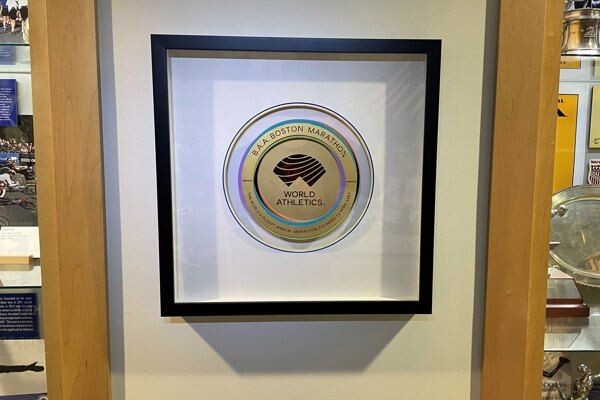
The plaque was unveiled by Thomas S. Grilk, B.A.A. President & Chief Executive Officer, and World Athletics Heritage Director Chris Turner, in the company of Jack Fleming, B.A.A. Chief Operating Officer, and fellow colleagues from the B.A.A. organization.
The tough one

Boston’s notoriously demanding course, with its final incline ‘Heartbreak Hill’ 20 miles into the race that has gone down in marathon folklore, has floored many a world beater.
Amby Burfoot, the 1968 Boston Marathon champion, confirmed on Boston.com that the challenge is also “the downhill from the top of Heartbreak Hill to Cleveland Circle. This is called ‘Cemetery Mile’ for two good reasons: Evergreen Cemetery to the runners’ right, and the way the steep downhill deadens the legs, specifically the quadriceps muscles.”
Notably, despite the stature of the race, only five Olympic champions have ever managed to win in Boston.
Four women, firstly two-time Boston victor Joan Benoit (1979, 1983), who won the 1984 Olympic title in Los Angeles, and two three-time winners in Ethiopia's Fatuma Roba (1997, 1998, 1999), the Atlanta 1996 champion; Portugal's Rosa Mota (1987, 1988, 1990), who took the Olympic title in Seoul in 1988; and Kenya's 2022 Boston winner Peres Jepchirchir, who was the Olympic victor in Tokyo.
The sole male runner so far to accomplish the rare double is Italian Gelindo Bordin (1990), the Seoul 1988 Olympic champion, who took first place in Boston two years later.
The ‘American Marathon’
The racing singlets, running shoes, medals and trophies and hundreds of pieces of historic memorabilia in the B.A.A.'s museum pay tribute to the city’s famous marathon, which was inspired by and founded a year after the running of the inaugural Olympic marathon at the 1896 Games in Athens.
The B.A.A. itself had been established 10 years before. It was one of the association’s members, John Graham, who, as USA team manager at those 1896 Games witnessed the marathon race, proposed creating a similar long distance race in Boston.
The race, originally called the American Marathon, has an annual Monday date which makes it unique among elite international marathons. The Boston Marathon has always been held on the holiday commemorating “Patriots’ Day”, which since 1969 has become officially recognized as the third Monday in April.
The B.A.A., which has a mission to promote a healthy lifestyle, especially through running, has its HQ and museum virtually located at the finish line of the marathon.
Running treasure trove
The plaque, which is mounted on a wall in its own showcase in the museum, has joined a verifiable treasure trove of distance running artefacts associated with the race’s storied history.
The B.A.A.’s collection of memorabilia and its archive is always growing. In fact, they recently received a gift of a rare finisher medallion from the 1903 Boston Marathon. The competition bib number of last week’s Boston winner Jepchirchir is the very latest acquisition.
The perpetual Champions’ Trophy, which the winners receive immediately following the Boston Marathon, and the second place award (mounted plaque) from the first B.A.A. Boston Marathon in 1897 are standout exhibits.
Poignantly, the 2013 champion's medallion won by men’s victor Lelisa Desisa of Ethiopia was gifted back to the City of Boston in the summer of 2013, shortly after the notorious bombings which occurred on marathon day that year.
The collection, which contains hundreds of artefacts and thousands of images, has recently been renamed as the Gloria G. Ratti Collection in posthumous recognition of their long-time archivist and historian. Ratti was a B.A.A. Vice President on the Board of Governors.
by World Athletics
Login to leave a comment
Boston Marathon
Among the nation’s oldest athletic clubs, the B.A.A. was established in 1887, and, in 1896, more than half of the U.S. Olympic Team at the first modern games was composed of B.A.A. club members. The Olympic Games provided the inspiration for the first Boston Marathon, which culminated the B.A.A. Games on April 19, 1897. John J. McDermott emerged from a...
more...The Credit Union Cherry Blossom Race Committee is excited to Offer $10,000 World Record Bonuses at this year’s race
The Credit Union Cherry Blossom Race Committee is excited to announce new World Record bonuses being offered at this year’s race, scheduled for Sunday, April 5. These new bonuses are in addition to the $10,000 bonuses that have been offered to the first U.S. male and female breaking the American Record for the last three years.
Since the race started in 1973, the annual Runner’s Rite of Spring ® has been the site of 10 world and nine American records. The first World Record was set in 1986 when Portugal's Rosa Mota ran 53:09, and the most recent was in 2007 when Ethiopia's Teyba Erkesso set the Single-sex Women's World Record with a time of 51:44 (which still stands).
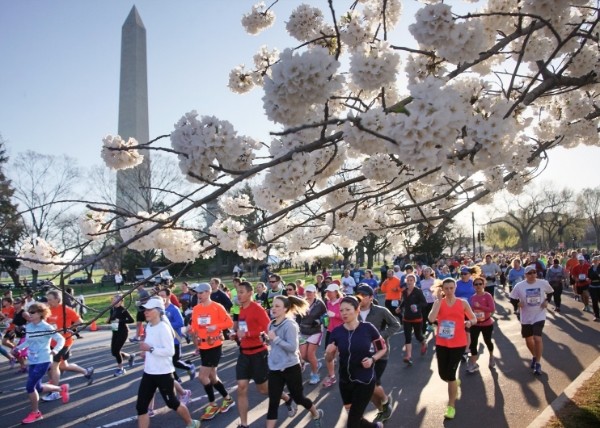
The first American Record set at the event was in 1976 by Julie Shea in 57:04, and the most recent by Janet Bawcom with a Single-sex Women's American Record of 52:12 in 2014.

Event Director Phil Stewart said, "As the 19 world and American records show, the Credit Union Cherry Blossom 10 Mile has long been the venue for extraordinary international and American stars to showcase their talents on the streets of the Nation's Capital. We hope that offering the new World Record bonuses will set the stage for our 20th World or American record performance as the event closes in on its gala 50th running in 2022. Our organizing committee has always taken great pride in staging a world-class sporting event for these elite athletes alongside a beloved spring tradition for 16,000 participants taking up to three times as long to cover the same distance."
The addition of the bonuses brings the total amount of prize money and bonuses up for grabs in 2020 to $116,500. A complete breakdown of that $116,500 includes the aforementioned $20,000 should both men’s and women’s World Records be broken (see times below); $10,000 for the first American man to break Greg Meyer’s American Record of 46:13, set here in 1983; $10,000 for the first American woman to break Bawcom’s American Record of 52:12, set here in 2014; $40,000 in open prize money, plus a possible $3,500 in time bonuses, paid equally to the top-ten men and women; and $25,000 in American prize money, again paid equally to the top-ten American men and women.
In addition, race organizers have collaborated with the Road Runners Club of America to offer a total of $6,000 to the top-three American men and women who qualify as past recipients of RRCA Road Scholar Grants, or are RRCA RunPro Camp alumni. Finally, the Washington Metropolitan Area Team Championship Division offers $1,000 to the first place men’s and women’s teams consisting of talented, open-division DC-area Running Club Store or Running Club teams.
Login to leave a comment
Cherry Blossom Ten Mile Run
The Credit Union Cherry Blossom is known as "The Runner's Rite of Spring" in the Nation's Capital. The staging area for the event is on the Washington Monument Grounds, and the course passes in sight of all of the major Washington, DC Memorials. The event serves as a fundraiser for the Children's Miracle Network Hospitals, a consortium of 170 premier...
more...The Great North Run, will honor five women who played a part inspiring an unstoppable wave of female runners
Login to leave a comment






